Customer value helps businesses boost loyalty, drive referrals and maximize ROI – even with limited resources.
Yet many SMBs struggle to measure and improve it, often stretching resources too thin or missing key moments in the customer journey.
In this article, you’ll learn what customer value is, why it matters and three actionable ways to increase it so you can strengthen long-term relationships, reduce churn and unlock more predictable revenue growth.
Key takeaways
Customer value is a customer’s perception of how much your product or service is worth based on functional, monetary, social and psychological factors.
For SMBs, prioritizing customer value improves loyalty, drives referrals and maximizes ROI without requiring large budgets or teams.
Many SMBs struggle to measure and improve customer value, but using tools like CRMs helps overcome this challenge.
Pipedrive helps SMBs increase customer value with personalization, touchpoint optimization and value-driven offers – start a 14-day free trial to strengthen loyalty and accelerate growth.
Customer value definition: Customer value represents the total benefit a consumer receives from a product or service compared with the cost they pay.
In practical terms, the value of the customer shows how much your business:
Improves a customer’s life
Provides customer satisfaction relative to the money, time or effort they spend
Customers weigh benefits against sacrifices. If the total customer benefits outweigh the total customer costs, the value for money is high.
Here’s how to calculate customer value:
Customer value = perceived value / price paid
You can also quantify customer value with the customer lifetime value (CLV) formula:
CLV = (average purchase value × purchase frequency) × customer lifespan
Note: CLV identifies high-value customers from a revenue perspective, but doesn’t capture the full picture of customer value as a lived experience.
Keeping the distinction clear ensures you don’t overlook the emotional, social and functional drivers that keep customers coming back. More on measuring CLV later.
Here’s a breakdown of the key components of CLV:
Average purchase value | How much a customer spends on average per transaction. |
Purchase frequency | How often a customer buys from you over a certain period. |
Customer lifespan | How long a customer continues buying from your business. |
CLV estimates are powerful customer value indicators for SMBs. They highlight which customers bring the highest return on sales and guide where to focus sales and marketing strategies.
McKinsey research shows that companies that focus on delighting customers extract more value from their existing customer base, which translates into stronger financial results.
By understanding customer value, you can allocate resources more effectively, strengthen loyalty and grow profits without overspending.
Why customer value is important for SMBs
Customer value is a critical metric for maximizing growth and profitability when managing limited resources.
Here are the main reasons small businesses should prioritize customer value:
Focus limited resources efficiently. SMBs often have smaller marketing and sales budgets. Tracking customer value helps prioritize high-value customers and campaigns to optimize spend for the best results.
Improve customer retention. Satisfied customers are more likely to buy again, reducing churn and acquisition costs. Understanding what customers value most allows SMBs to tailor offers and improve their offerings.
Drive growth without scaling headcount. Increasing customer value means SMBs can grow revenue without adding large marketing or sales teams. Upselling, cross-selling or improving experiences boosts sales without extra staff.
Inform strategic decisions. Tracking customer value provides insight for smarter decision-making across the business. The data shows which products to improve, what pricing customers will accept and which services deliver the highest returns.
Prioritizing customer value enables SMBs to strengthen customer loyalty, maximize ROI and build sustainable growth without overextending resources.
How to measure customer value: tips for SMBs
SMB sales can measure customer value by tracking repeat purchases, feedback, engagement and advocacy.
Here’s how SMBs can track and measure customer value in practice.
Track repeat purchases and subscription renewals
Repeat purchases and subscription renewals are clear indicators of good customer value.
Customers who return consistently or renew subscriptions show that your product or service meets their needs. SMBs can use this data to identify their most loyal segments and focus retention efforts where they have the biggest impact.
To start measuring, focus on specific behaviors that reveal loyalty and revenue potential:
Monitor purchase frequency. Track how often each customer buys over a defined period. This data reveals the most engaged customers and allows you to tailor follow-ups to encourage continued purchases.
Track subscription renewals. Measure renewal rates for recurring services. Falling renewal rates can signal dissatisfaction or friction points, letting you intervene before losing revenue.
Segment customers. Group customers based on their buying patterns. As a result, you can prioritize marketing and retention resources toward the segments generating the most value.
A client relationship management (CRM) platform centralizes customer purchase history, making it easy to spot repeat business and subscription activity patterns.
With Pipedrive, for example, you can create pipeline stages for repeat purchases and subscriptions.
Here’s an example of a workflow with custom stages in Pipedrive:
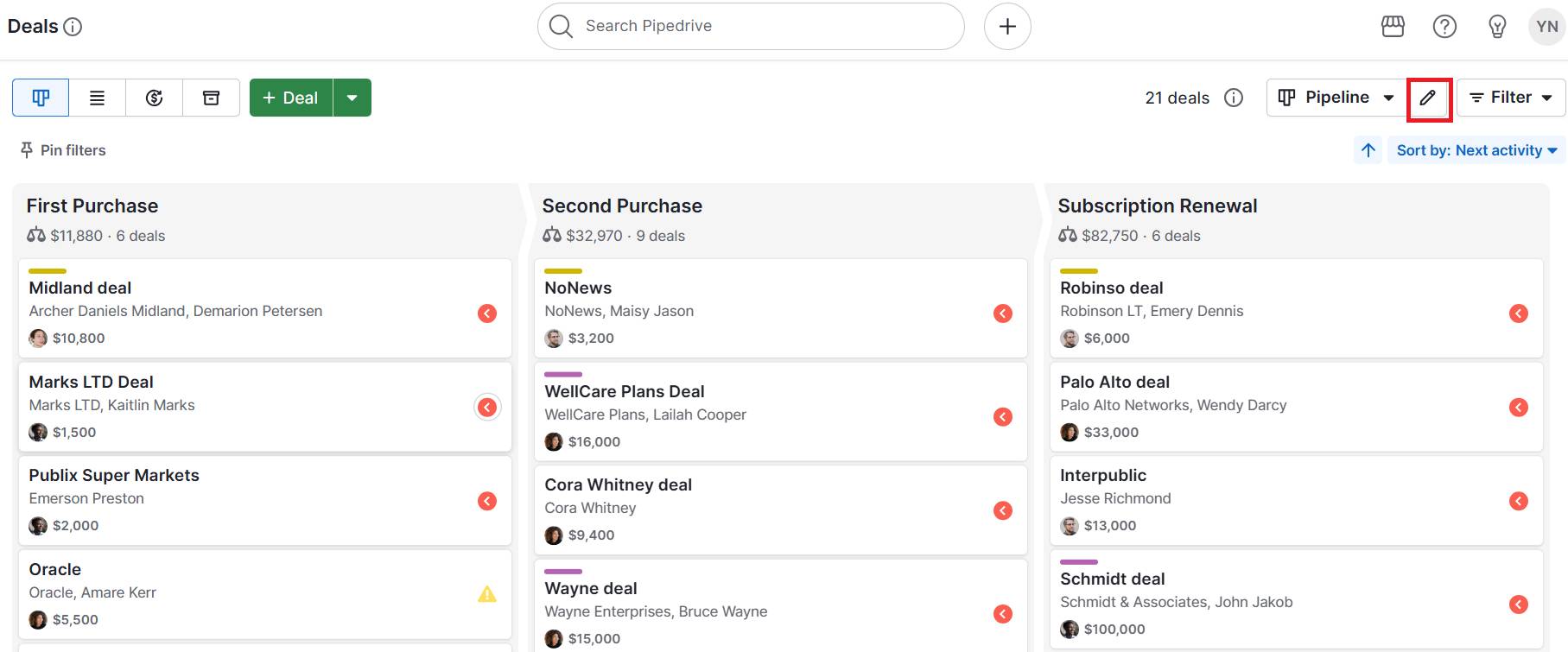
Each stage can represent a step in the customer’s journey, such as first purchase, second purchase or subscription renewal. Then, you can track customers in real time.
Download our Customer Journey Map Template
Use simple customer surveys
Surveys give SMBs direct insight into what customers value, how satisfied they are and what they think of your brand reputation.
Customer feedback uncovers the information needed to improve offerings, user experience and engagement.
Well-designed surveys can also help you segment customers based on perceived value and tailor future interactions.
Consider these steps to turn customer survey data into actionable insights:
Send concise, targeted surveys. Use tools like Google Forms or email to ask a few key questions. Keeping surveys short encourages more responses while still capturing meaningful insights.
Ask value-focused questions. Include items such as, “Which feature or service is most valuable to you?” or “How likely are you to recommend us?” These answers reveal what customers appreciate most and where to make improvements.
Segment responses for analysis. Organize survey results by customer group or score to spot patterns. This segmentation helps you create tailored offers, messaging and campaigns for different segments.
A CRM links survey responses to customer profiles, creating a holistic view of engagement and satisfaction.
Pipedrive lets you record survey results and connect feedback to individual deals or accounts. From here, you can filter and segment customers by their survey scores, track trends over time and trigger follow-up actions such as personalized offers.
Here’s an example of labeling users in Pipedrive to create customer segments:
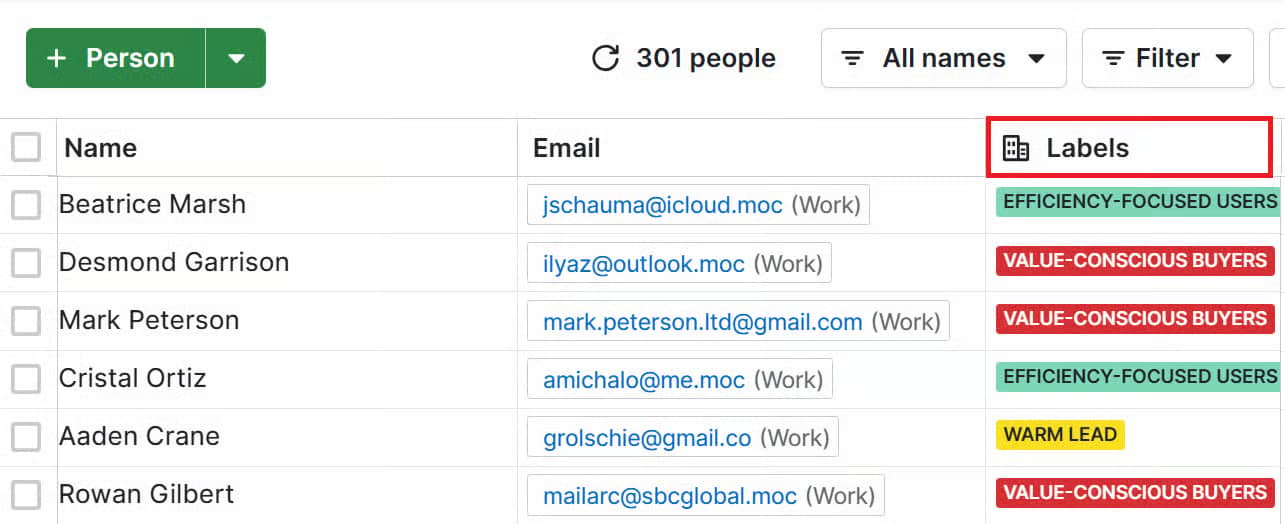
Linking survey responses to a CRM turns feedback into actionable insights. SMBs can prioritize high-value segments and make data-driven decisions that improve retention, satisfaction and revenue.
Monitor engagement with your brand
Customer engagement is a strong indicator of perceived value and future purchases.
Customers who actively open emails, click links or respond to campaigns show interest and loyalty. Low engagement can signal disengagement or dissatisfaction. Tracking these behaviors allows SMBs to target follow-ups and nurture campaigns effectively.
To understand engagement, focus on measurable actions that indicate interest and involvement:
Track email interactions. Monitor opens, click-through-rates and replies to emails. These insights reveal which customers are paying attention to your messaging and help you tailor email content to boost interest.
Analyze website and content activity. Track website visits, downloads and time spent on key pages. Customers who engage consistently are more likely to make repeat purchases.
Compare engagement across segments. Identify patterns among high and low-value customers. This information helps prioritize retention efforts and adjust campaigns to boost ROI.
A sales CRM consolidates engagement data alongside customer records, giving a holistic view of behavior and interest over time.
Pipedrive’s CRM lets you log all activity (including email opens, clicks and call notes) in one place.
Here’s an example of the email activity you can track in Pipedrive:
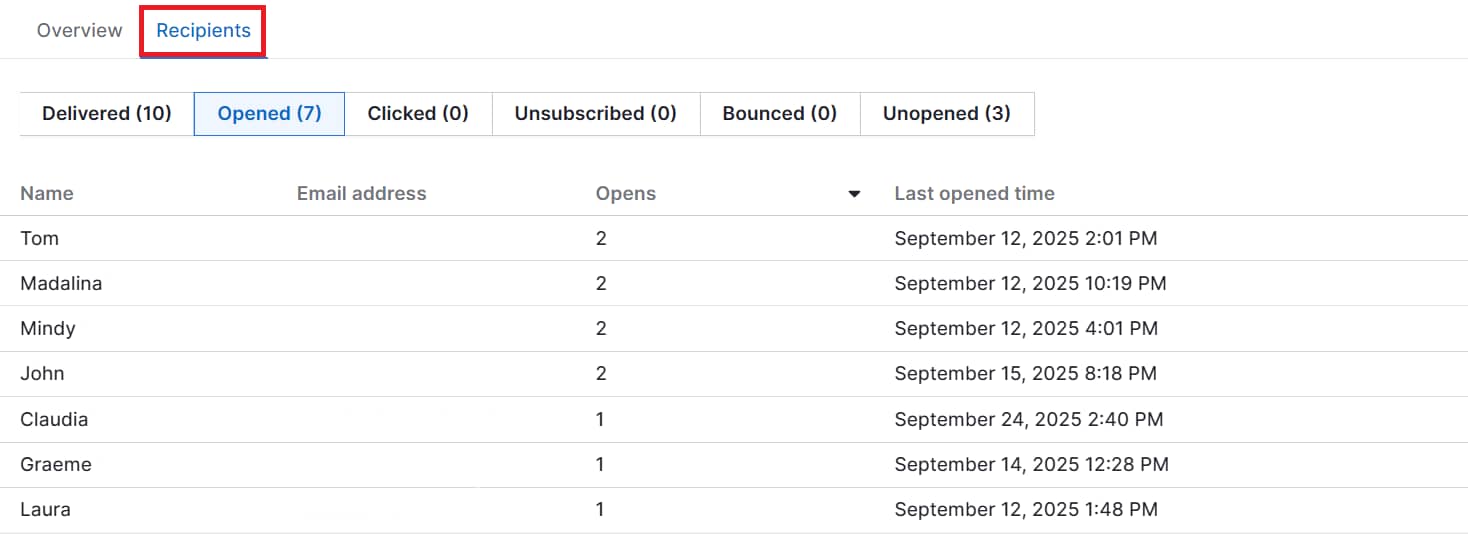
This data ensures your sales and marketing efforts focus on the customers most likely to generate ongoing value.
Estimate CLV in a simple way
CLV estimates help SMBs identify high-value customers and make smarter decisions about marketing spend, retention and product development.
To calculate and interpret CLV effectively, follow these steps:
Calculate average purchase value. Divide total revenue by the number of purchases in a set period. This value shows the typical contribution of each transaction to overall revenue.
Determine purchase frequency. Measure how often a customer buys within the same period. Frequent purchases indicate higher potential lifetime value and loyalty.
Estimate the customer lifecycle. Track how long customers stay active or continue buying. Longer lifespans increase CLV and highlight relationships worth investing in.
Combine metrics to find CLV. Multiply average purchase value × purchase frequency × customer lifespan. Focus on trends over exact numbers to identify growth opportunities.
A CRM stores historical purchase data and calculates trends over time, allowing you to easily calculate CLV.
Use Pipedrive to pull historical deal data for each customer to track customer longevity. For example, you can create custom dashboards to automatically visualize CLV trends:
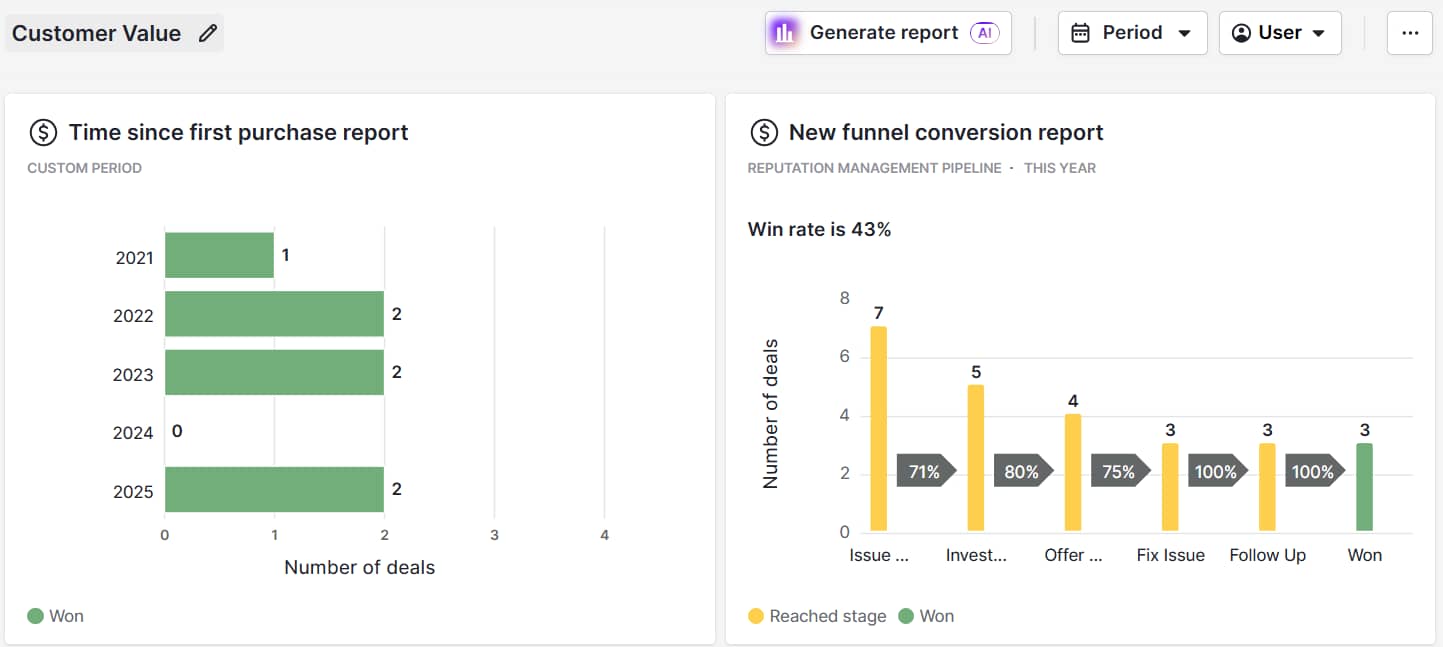
Track total revenue per customer, repeat purchase frequency and time since first purchase to identify high-value customers and prioritize efforts accordingly.
Get organized with your free sales pipeline excel template
Watch referral and advocacy behaviors
Monitoring who recommends your business and how often helps SMBs reward advocates and leverage them for growth.
Referrals and word-of-mouth recommendations are strong indicators of customer value because satisfied customers generate new revenue at minimal cost.
To capture the impact of advocacy, focus on observable behaviors and patterns:
Track referral activity. Record who brings in new customers and the frequency of referrals. This activity highlights your most loyal and influential clients.
Encourage testimonials and reviews. Ask satisfied customers to share their experiences publicly. Positive reviews increase credibility and attract new prospects.
Monitor social engagement. Look for shares, tags and mentions that demonstrate active promotion of your brand. These insights identify advocates who may influence their networks.
Tracking referrals and advocacy helps SMBs identify their most influential customers, reward loyalty and maximize relationships to drive sustainable growth.
3 ways to increase customer value and improve business outcomes
SMBs can increase customer value by creating more personalized experiences, optimizing key touchpoints and offering incentives that meet customer expectations.
Here are three practical ways to increase value and drive better business outcomes.
1. Personalize the customer experience
A personalized experience increases customer value by making them feel understood and appreciated, boosting loyalty, repeat business and lifetime revenue.
Take a look at Duolingo as an example.
After a user signs up, the app initiates a series of emails designed to engage and guide them through their language learning journey. These include welcome emails, progress updates and reminders to motivate learners.
Here’s the initial email:
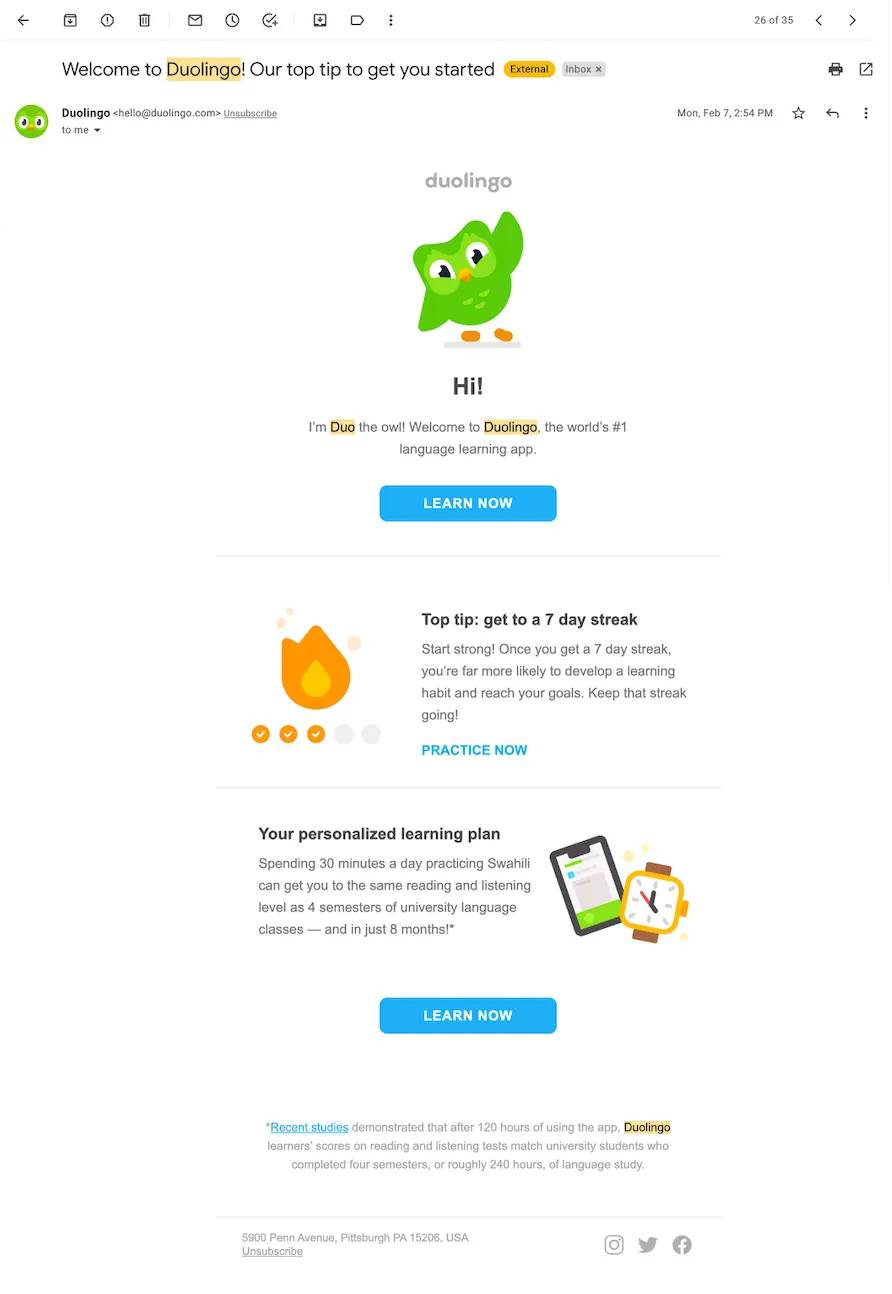
These emails boost customer value by offering useful tips and advice, both of which support and motivate consumers to continue using the service.
Use these strategies to make personalization practical and effective:
Analyze CRM data to understand behavior. Track past purchases, interactions and preferences. This insight helps predict what customers want and informs targeted messaging and offers.
Tailor communications and follow-ups. Send emails or messages relevant to each customer’s needs or milestones. Personalized outreach increases engagement and demonstrates that your business values them as individuals.
Use examples of personalized offers. For instance, suggest an upsell based on previous purchases or congratulate a customer on a relevant milestone. These gestures strengthen emotional connection and encourage repeat business.
Pipedrive offers a suite of personalization tools that empower SMBs to tailor their customer interactions effectively.
Here are some of the key features:
Custom fields and segmentation | Create custom fields to capture specific customer information, enabling precise segmentation. Benefit: Target communication based on customer attributes. |
Automated workflows | Set up workflow automations to send personalized emails and reminders based on customer behavior and interactions. Benefit: Send timely and relevant communication automatically. |
Lead scoring | Implement lead scoring to prioritize high-value prospects. Benefit: Focus efforts on leads with the highest potential |
With these CRM features, SMBs can deliver personalized experiences that strengthen customer relationships.
Pipedrive in action: TrekkSoft used Pipedrive to personalize marketing efforts by segmenting leads and automating marketing campaigns. This tailored approach doubled sign-ups, increased email outreach from 500 to 4,000 per week and boosted sales team productivity fourfold.
2. Optimize touchpoints across the buying journey
When SMBs focus on touchpoints that matter most (like onboarding, customer support and education), they create a seamless experience that strengthens long-term relationships.
Here are a couple of examples from website builder Framer. The first is one of the company’s paid social media ads on LinkedIn:
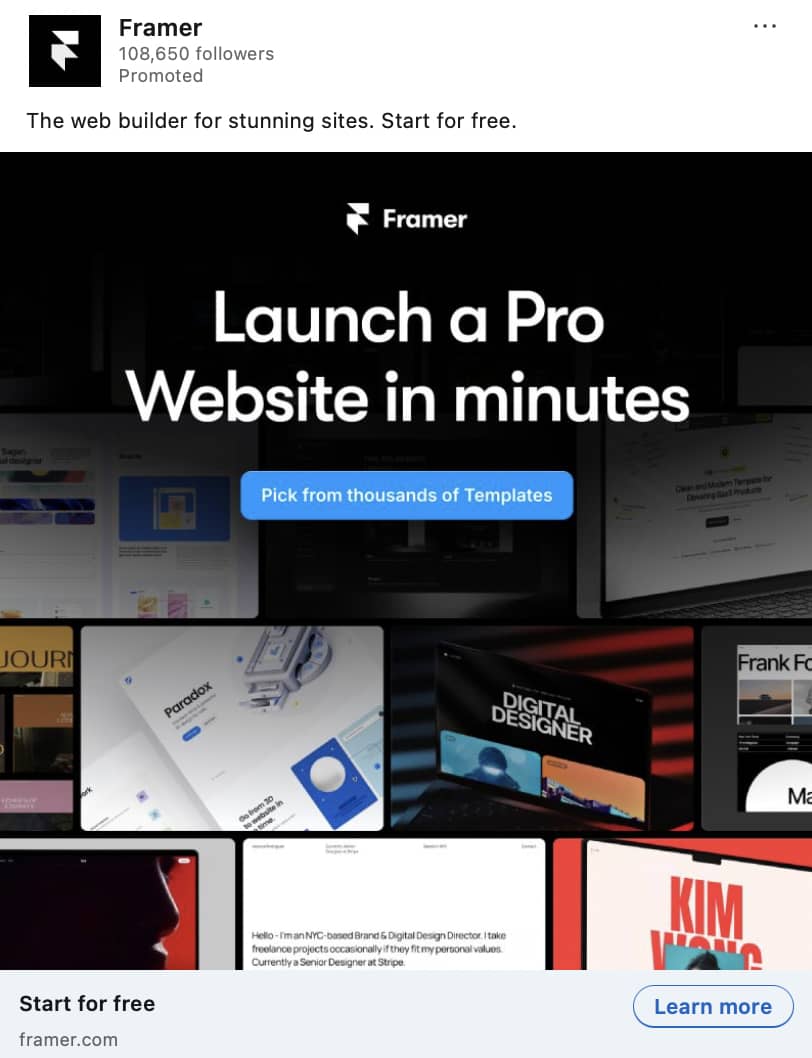
The ad raises brand awareness, introduces Framer’s value proposition and sets the stage for future interactions that can lead to conversions.
The second example is this post-purchase email:
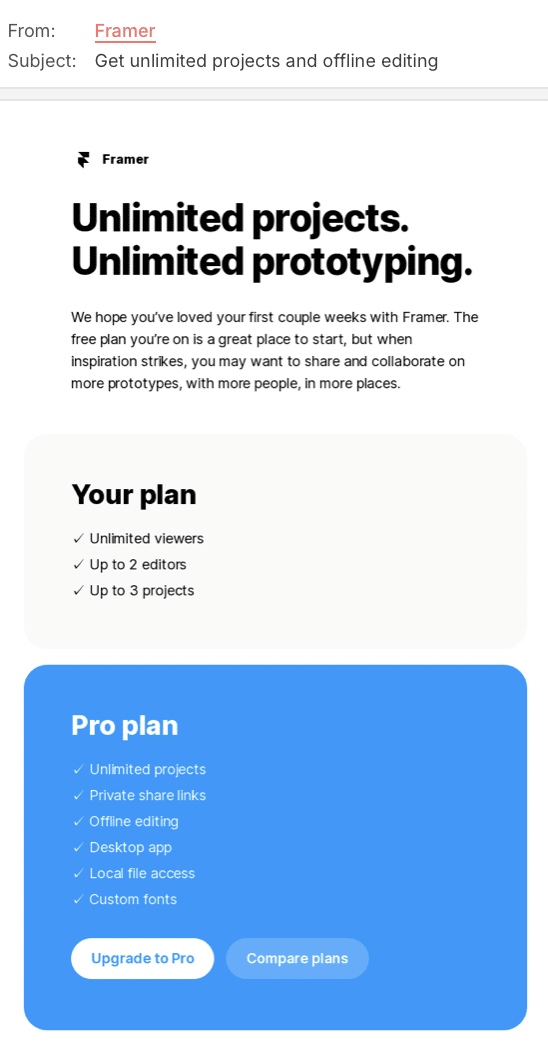
The email suggests additional templates and features customers might like, keeping the brand top of mind after their initial purchase.
These communications at different points in the buying journey strengthens relationships, boosts loyalty and increases customer lifetime value (CLV).
Here’s how to refine key customer interactions to create a smoother journey:
Streamline onboarding. A smooth start reduces drop-off and builds long-term confidence. Guide new customers through setup with clear instructions, tutorials or kickoff calls.
Provide proactive support. Shows customers that your business cares about their experience. Reach out before issues arise, anticipate potential friction points and offer solutions ahead of time.
Deliver educational content. Empowered customers are more engaged, loyal and likely to renew. Share guides, tips and best practices to help customers maximize the product.
CRM systems like Pipedrive give you full visibility of the customer journey, helping you spot key touchpoints and identify where customer engagement will make the biggest impact.
For instance, manage a sales pipeline that mirrors your sales process and monitor how leads and deals progress through each stage. This allows you to align outreach and resources with customer needs at the right time.
Here’s how these stages appear in Pipedrive:
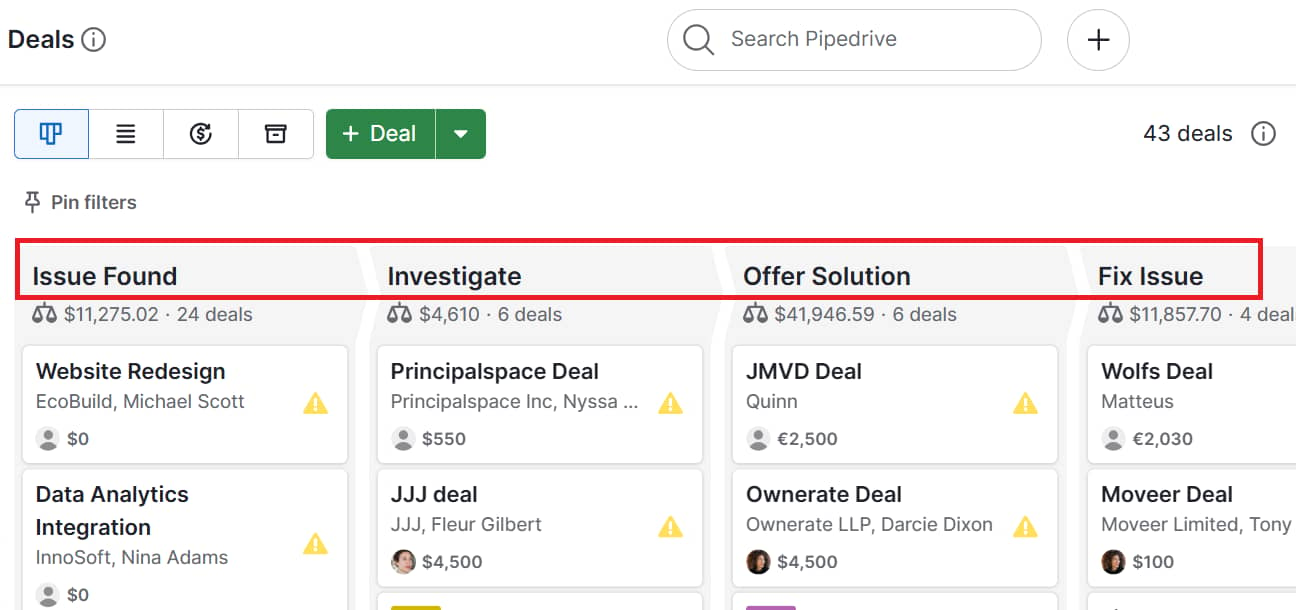
With this oversight, you can nurture leads effectively, sharing information at the right time to increase the likelihood of conversion.
Pipedrive in action: Full-service digital agency Spark Interact introduced automated follow-up emails, clear sales pipeline stage definitions and activity prompts to ensure no leads slip through the cracks. The CRM’s structured and predictable sales process generates 12% annual revenue growth for the agency.
3. Create value-driven offers and incentives
Offering tailored bundles, loyalty programs or small perks encourages repeat purchases and increases a customer’s perceived value.
TechSolution is a good example.
The growing SaaS company launched a loyalty program that offered personalized incentives like early access to features, exclusive webinars and tiered rewards.
The points-based system rewarded customers for actions like referrals, completing surveys and product usage. Members could redeem points for feature upgrades, exclusive webinars or priority support.
The program’s tiered rewards unlocked greater benefits as customers advanced, adding a gamified element that boosted engagement.
Thanks to the TechSolution loyalty program:
Customer referrals rose, driving a 22% increase in new customer acquisition
40% of new customers reported that recommendations from existing users influenced their decision to join
Participation in product feedback surveys and beta testing grew by 78%
These results show that well-designed, personalized incentives can enhance customer engagement and loyalty to drive long-term success.
Consider these approaches to craft offers that resonate with your customers:
Bundle complementary products or services. Combining products or services that solve related problems increases convenience and perceived value. This process drives customers to spend more while fully addressing their needs.
Implement loyalty or referral programs. Rewarding repeat purchases or referrals strengthens engagement and incentivizes advocacy. As a result, you retain loyal customers and attract new ones without overspending.
Offer small, high-value perks. Free add-ons, priority support or exclusive content enhance satisfaction. These perks improve how a customer feels about your brand, increasing their likelihood of buying again.
Pipedrive’s CRM helps SMBs design and deliver effective incentives by providing insight into purchase patterns.
For example, sales reps can create product reports. These reports show which products or services sell most, allowing them to tailor incentives likely to drive repeat purchases.
Here’s how this information appears in Pipedrive:
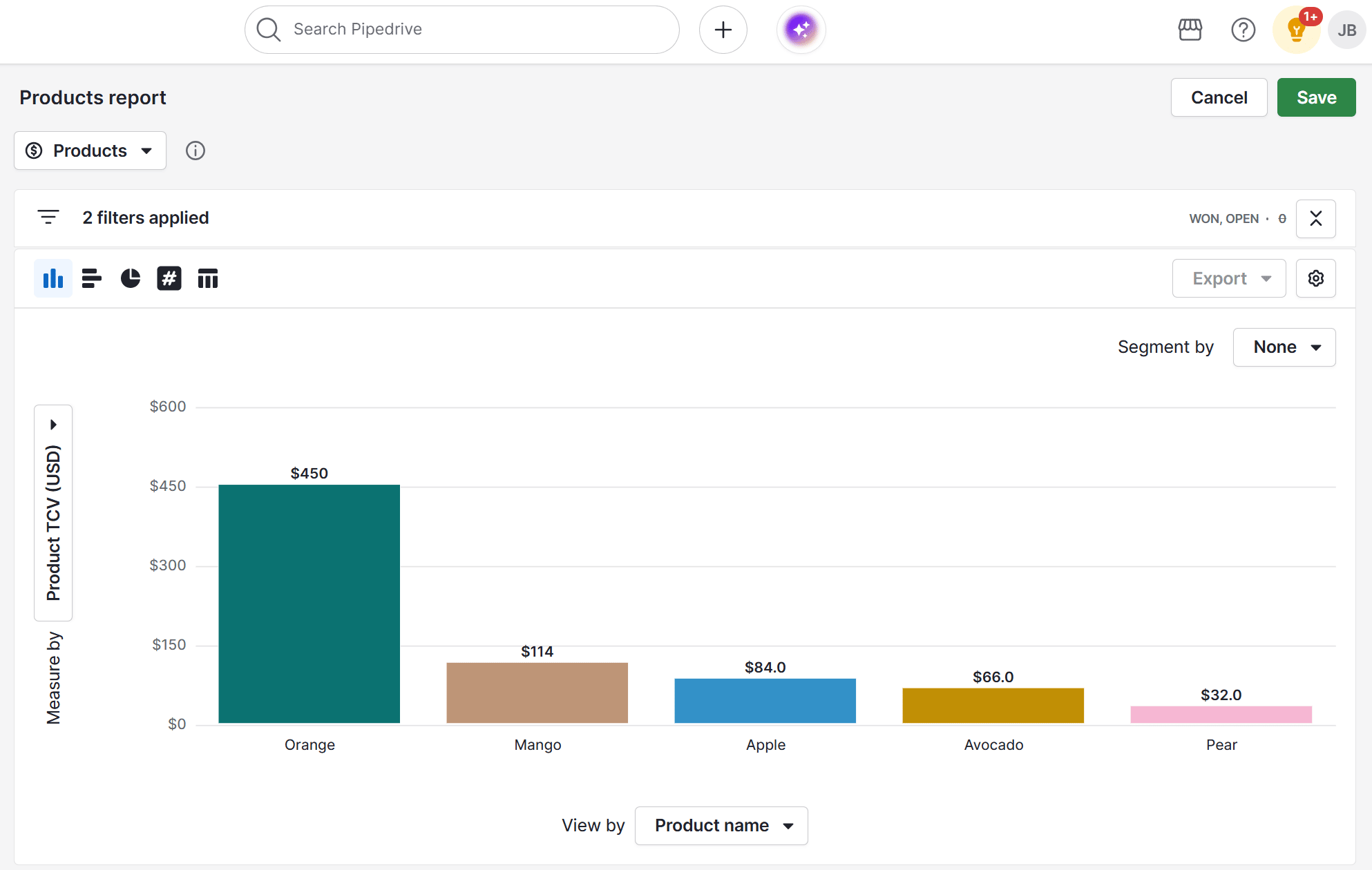
The CRM also highlights the optimal stage in the buying journey for offering rewards or perks, ensuring timely and impactful incentives.
Pipedrive in action: Tiffany Largie, a business coach and speaker, used Pipedrive to manage client relationships and offer personalized incentives. By segmenting her customer base and tailoring offers, she increased client engagement and grew her business to $2.5 million.
When done well, these approaches build lasting relationships. Combining bundles, loyalty programs and small but meaningful perks increases value and engages customers long after their first purchase.
Final thoughts
Increasing customer value drives SMB growth through loyalty, retention and smarter resource use.
By personalizing experiences, refining your ideal demographic touchpoints and offering meaningful incentives, you strengthen client relationships to boost sales.
A CRM like Pipedrive helps turn strategies into action with centralized customer data, journey tracking and tailored offers.
Sign up for a 14-day free trial to strengthen loyalty and accelerate growth.







